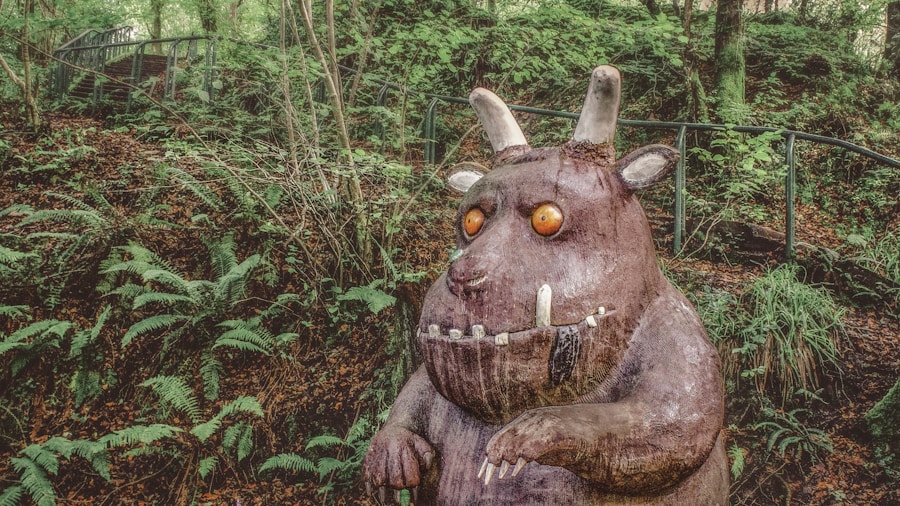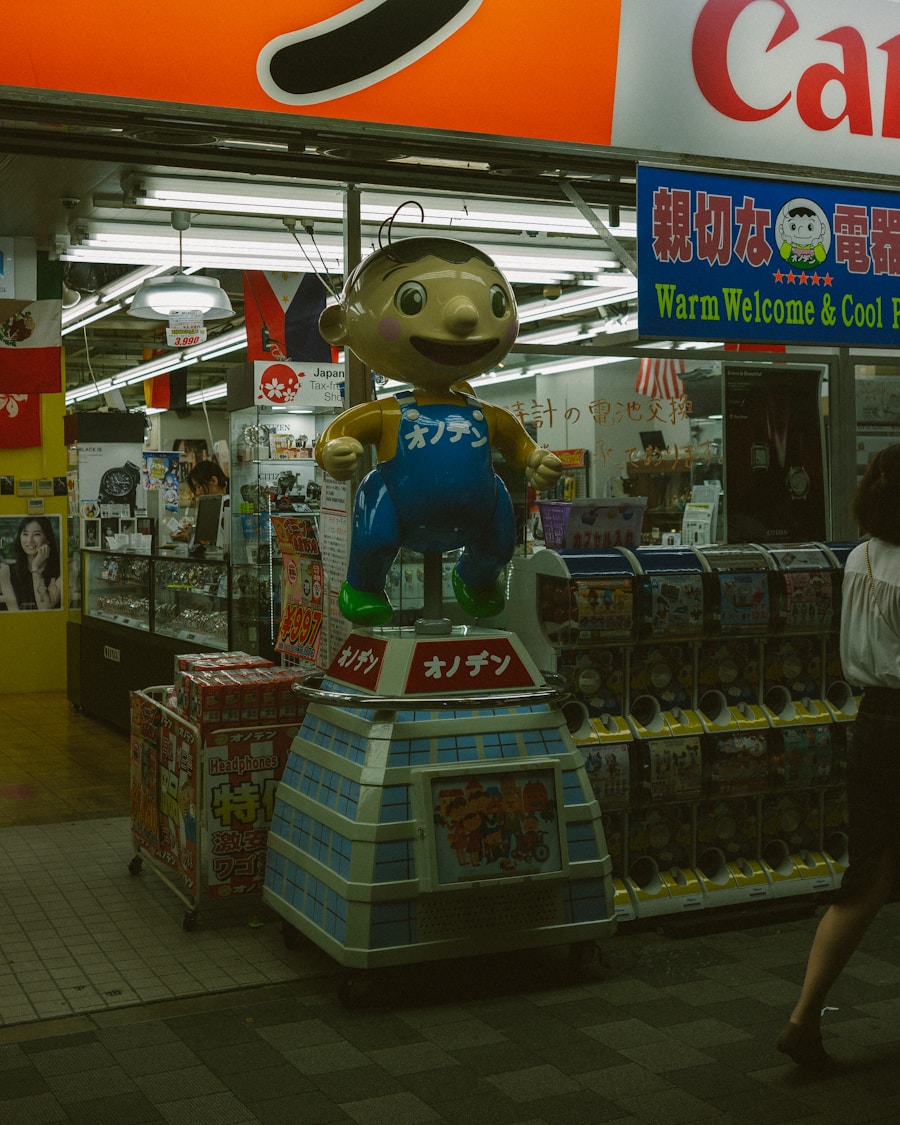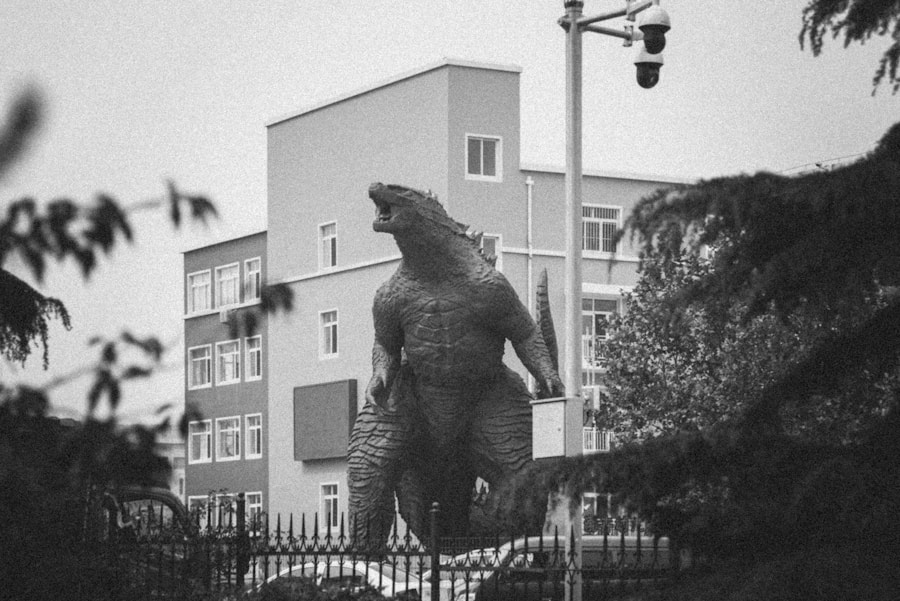In the realm of kaiju cinema, stock footage has played a pivotal role in shaping the narrative and visual landscape of films. Stock kaiju footage refers to pre-existing film clips that are reused in various productions, often to save time and resources. This practice became particularly prominent during the Showa era, a period marked by the rise of iconic monsters like Godzilla, Mothra, and Gamera.
As you delve into the world of kaiju films, you will discover how stock footage not only influenced storytelling but also became a defining characteristic of the genre. The use of stock footage is not merely a cost-cutting measure; it is a creative tool that allows filmmakers to weave together complex narratives while maintaining a sense of continuity. By repurposing existing scenes, directors could enhance their films’ emotional weight and visual spectacle without the need for extensive new shoots.
This practice has left an indelible mark on the kaiju genre, creating a unique blend of nostalgia and innovation that continues to resonate with audiences today.
Key Takeaways
- Stock Kaiju footage refers to the reuse of previously filmed monster scenes in new productions.
- Showa-era Kaiju films were heavily influenced by the use of stock footage to save time and money.
- Stock Kaiju footage was also utilized in Showa-era television shows to create thrilling monster battles.
- The use of stock Kaiju footage had a significant impact on budget and production time, allowing for more projects to be completed.
- The legacy of stock Kaiju footage continues to influence modern Kaiju films and shows, despite criticisms and controversies surrounding its use.
Influence on Showa-Era Kaiju Films
During the Showa era, which spanned from 1954 to 1975, kaiju films experienced a significant evolution, and stock footage played a crucial role in this transformation. You may notice that many of these films relied heavily on previously shot scenes to create a sense of familiarity and continuity. For instance, iconic moments from earlier Godzilla films were often repurposed in later installments, allowing filmmakers to build upon established lore while keeping production costs manageable.
This reliance on stock footage also allowed for the exploration of new narratives within the established kaiju universe. By incorporating familiar scenes, filmmakers could create a sense of interconnectedness among different films, inviting audiences to engage with the broader mythology of kaiju. As you watch these films, you might find yourself recognizing familiar sequences that evoke nostalgia while simultaneously serving the story’s progression.
Utilization of Stock Kaiju Footage in Showa-Era Television Shows

The influence of stock kaiju footage extended beyond the silver screen and into television shows during the Showa era. Programs like “Ultra Q” and “Ultraman” utilized stock footage to enhance their storytelling while keeping production costs low. You may find it fascinating how these shows managed to create thrilling narratives by integrating existing kaiju footage into their episodes, allowing for dynamic action sequences without the need for extensive new filming.
Incorporating stock footage into television shows also allowed for a unique interplay between different kaiju properties. For instance, scenes featuring Godzilla could be seamlessly integrated into an Ultraman episode, creating a crossover effect that delighted fans. This practice not only enriched the viewing experience but also fostered a sense of community among kaiju enthusiasts who eagerly discussed these connections.
Impact on Budget and Production Time
| Project | Impact on Budget | Impact on Production Time |
|---|---|---|
| Project A | Increased by 15% | Extended by 20% |
| Project B | Decreased by 10% | Reduced by 15% |
| Project C | Increased by 5% | Extended by 10% |
One of the most significant advantages of using stock kaiju footage was its impact on budget and production time. As you explore the financial landscape of Showa-era kaiju films, you’ll realize that producing high-quality special effects and elaborate sets can be prohibitively expensive. By reusing existing footage, filmmakers could allocate their resources more effectively, focusing on new scenes that required original content.
This approach not only streamlined production schedules but also allowed for more ambitious projects. With the time saved from not having to shoot every scene from scratch, filmmakers could experiment with new ideas and concepts, ultimately leading to more innovative storytelling. As you watch these films, consider how the strategic use of stock footage contributed to their overall success and popularity.
Evolution of Stock Kaiju Footage in Showa-Era Projects
As the Showa era progressed, the use of stock kaiju footage evolved in response to changing audience expectations and technological advancements. Initially, filmmakers relied heavily on footage from earlier films, but as new techniques emerged, they began to incorporate more diverse sources. You may notice that later films featured a wider variety of kaiju and settings, reflecting a growing desire for fresh content while still utilizing familiar elements.
This evolution also led to more creative ways of integrating stock footage into narratives. Filmmakers began experimenting with editing techniques, blending old and new scenes in innovative ways that enhanced storytelling. As you watch these films, pay attention to how directors skillfully weave together different elements to create a cohesive narrative that feels both familiar and fresh.
Legacy of Stock Kaiju Footage in Modern Kaiju Films and Shows

A Connection to the Past
This connection to the past not only enriches modern narratives but also fosters a sense of continuity within the genre.
New Ways to Utilize Stock Footage
Moreover, advancements in technology have allowed for new ways to utilize stock footage. Filmmakers can now digitally enhance or manipulate existing clips, creating visually stunning sequences that resonate with both nostalgic fans and new audiences alike.
Balancing Innovation with Tradition
As you explore modern kaiju projects, consider how they balance innovation with tradition, ensuring that the spirit of the Showa era remains alive and well.
Criticisms and Controversies Surrounding the Use of Stock Kaiju Footage
Despite its many advantages, the use of stock kaiju footage has not been without its criticisms and controversies. Some purists argue that relying on pre-existing clips detracts from the originality and creativity of a film. You may encounter debates among fans regarding whether stock footage enhances or undermines the overall quality of a project.
This discourse highlights the tension between nostalgia and innovation within the genre. Additionally, there are concerns about how stock footage can lead to repetitive storytelling. When filmmakers rely too heavily on familiar scenes, it can result in a lack of originality that may alienate some viewers.
As you engage with these discussions, consider how filmmakers can strike a balance between honoring tradition and pushing creative boundaries.
Stock Kaiju Footage’s Enduring Impact on Showa-Era Projects
In conclusion, stock kaiju footage has left an enduring impact on Showa-era projects, shaping both the narrative structure and visual style of countless films and television shows. As you reflect on this unique aspect of kaiju cinema, you’ll appreciate how it allowed filmmakers to create rich, interconnected stories while managing budgets and production timelines effectively. The legacy of stock footage continues to influence modern kaiju works, ensuring that this creative practice remains relevant in today’s cinematic landscape.
Ultimately, stock kaiju footage serves as a testament to the ingenuity and resourcefulness of filmmakers during the Showa era. By embracing this technique, they not only crafted memorable stories but also laid the groundwork for future generations of creators. As you explore the world of kaiju cinema, take a moment to recognize the significance of stock footage in shaping this beloved genre and its lasting impact on audiences around the globe.
